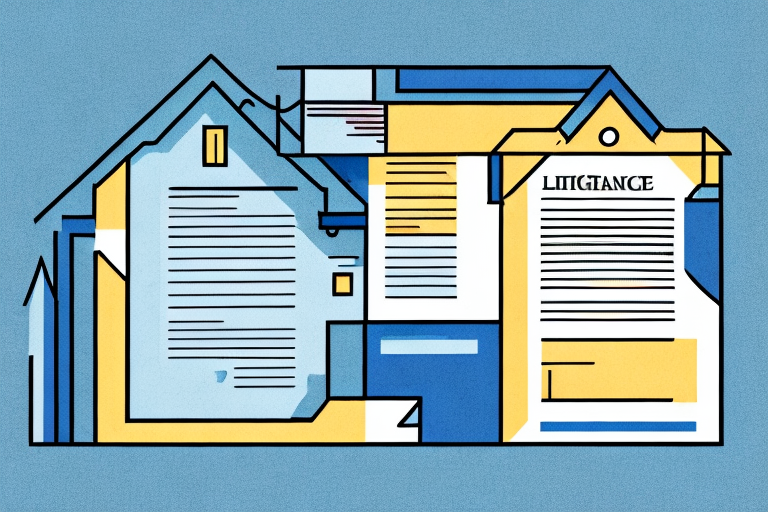In the realm of law, property law holds a significant position. It encompasses a wide range of rights and obligations relating to various types of properties. Understanding property law is crucial for both individuals and businesses, as it dictates the boundaries and rules governing the ownership, use, and transfer of assets. This article aims to provide a comprehensive overview of property law, shedding light on its fundamentals, evolution, property rights, and the role of government in regulating property matters.
Understanding the Basics of Property Law
Definition and Importance of Property Law
Property law can be defined as a branch of civil law that deals with the rights and obligations associated with a person’s assets, both tangible and intangible. It sets forth the rules that safeguard individuals’ interests in their properties, promoting stability and the efficient allocation of resources within society.
Property law is a fundamental aspect of our legal system, providing a framework for individuals to acquire, possess, use, and transfer property. Without property law and property lawyers Sydney, the concept of ownership and the ability to enjoy the fruits of one’s labor would be jeopardized. It ensures that individuals have the legal backing to possess, use, and dispose of their assets without undue interference or infringement.
Moreover, property law plays a crucial role in maintaining social order and economic development. It provides a sense of security and predictability, encouraging investment in real estate and other assets. By defining and protecting property rights, property law fosters economic growth and incentivizes individuals to make productive use of their resources.

Types of Property: Real and Personal
Property can be classified broadly into two categories: real property and personal property.
Real property refers to land, any structures or buildings permanently attached to it, as well as the rights associated with such land and structures. Real property encompasses not only physical entities like homes, commercial buildings, and vacant land but also natural resources like water, minerals, and crops that grow on the land.
Real property is a complex area of property law, as it involves various legal concepts such as ownership, possession, easements, and zoning regulations. These legal principles ensure that individuals can use and enjoy their land while respecting the rights of neighboring property owners and the broader community.
On the other hand, personal property includes movable assets such as vehicles, furniture, jewelry, and intellectual property rights like copyrights and patents. Personal property can be further classified as tangible (e.g., a car) or intangible (e.g., a patent).
Personal property is subject to different rules and regulations compared to real property. While real property often involves long-term ownership and extensive legal rights, personal property can be easily bought, sold, or transferred. However, certain legal protections and restrictions still apply to personal property to ensure fairness and prevent fraud.
Understanding the distinction between real and personal property is crucial in property law, as it determines the applicable legal principles and rights associated with different types of assets. Whether you are buying a house or protecting your intellectual property, knowing the specific rules and regulations governing each type of property is essential.
The Evolution of Property Law
Historical Overview of Property Law
Property law has a rich history, dating back to ancient civilizations. Ancient legal systems, such as those in Mesopotamia, Egypt, and Rome, recognized and protected individuals’ property rights through the establishment of various legal principles and institutions.
In Mesopotamia, one of the earliest known civilizations, property law played a crucial role in maintaining social order. The Code of Hammurabi, a set of laws created around 1754 BCE, defined the rights and responsibilities of property owners. It provided guidelines for land ownership, inheritance, and contracts, ensuring that individuals had legal protection for their possessions.
Similarly, in ancient Egypt, property law was a fundamental aspect of the legal system. The Pharaohs enacted laws that protected private property and regulated land ownership. The concept of individual property rights was so ingrained in Egyptian society that it extended to the afterlife, with tombs and burial sites being considered the eternal property of the deceased.

The Roman Empire also made significant contributions to property law. The Roman legal system, with its focus on private property rights, laid the foundation for modern property law. The concept of dominium, or ownership, was developed, allowing individuals to have exclusive control over their property. Roman law also recognized various forms of property, including land, buildings, and even slaves.
Throughout history, property law has continually evolved, adapting to the changing needs and values of societies. Feudalism, for example, influenced property rights during the Middle Ages, where landownership was tied to social status and obligations to the ruling class. The feudal system created a hierarchical structure where peasants worked the land owned by the nobility in exchange for protection and the right to live on the land.
In more recent times, property law has responded to the development of industrialization and urbanization, which brought about new challenges in land use, zoning, and protection of environmental rights. As cities grew, regulations were implemented to ensure that property was used in a manner that benefited society as a whole. Zoning laws were introduced to separate residential, commercial, and industrial areas, preventing incompatible land uses from interfering with one another.
Furthermore, the rise of environmental awareness in the 20th century led to the inclusion of environmental rights within property law. Governments recognized the importance of protecting natural resources and ecosystems, leading to the establishment of regulations that limit pollution, protect endangered species, and conserve natural habitats.
Modern Developments in Property Law
In today’s world, property law has become increasingly complex due to the rapid advancements in technology, the global economy, and the growing awareness of environmental issues. Modern developments in property law address emerging challenges, such as intellectual property rights, digital assets, and sustainable land usage.
The rise of the internet has presented unique legal issues relating to digital property, including cybercrime, online copyrights, and e-commerce regulations. Intellectual property rights have become crucial in protecting intangible assets such as inventions, trademarks, and creative works. Laws have been enacted to safeguard the rights of creators and innovators, promoting innovation while ensuring fair compensation for their contributions.

Moreover, the recognition of indigenous rights and the preservation of cultural heritage have become significant areas of concern in recent years. Property law has been expanded to include provisions that protect the rights of indigenous communities to their ancestral lands and natural resources. Efforts have also been made to safeguard cultural heritage sites from destruction or unauthorized exploitation.
Additionally, sustainable land usage has become a pressing issue in property law. With the growing awareness of climate change and environmental degradation, regulations have been implemented to promote responsible land management practices. These regulations aim to balance economic development with the preservation of natural resources, encouraging sustainable agriculture, renewable energy projects, and environmentally friendly construction practices.
In conclusion, the evolution of property law spans centuries, reflecting the changing needs and values of societies. From the ancient civilizations of Mesopotamia, Egypt, and Rome to the modern challenges of intellectual property rights and sustainable land usage, property law continues to adapt to the complexities of our ever-changing world.
Property ownership comes with a range of rights and privileges that enable individuals to exercise control over their assets. These rights include the right to possess, use, and enjoy the property, as well as the right to exclude others from interfering with it.
The right to possess means that the owner has the authority to physically occupy and control the property. This allows them to make decisions about its use, maintenance, and improvement. For example, a homeowner has the right to live in their house and make changes to the interior according to their preferences.
The right to use entails the freedom to utilize the property in any lawful manner desired by the owner. This could involve activities such as farming on agricultural land, operating a business in a commercial building, or simply enjoying the amenities of a residential property. It is through the right to use that owners can derive economic benefits from their property.
The right to enjoy refers to the ability to derive pleasure, satisfaction, or utility from the property. This can include aesthetic enjoyment, recreational activities, or any other form of personal fulfillment. For instance, a property owner may take pleasure in maintaining a beautiful garden or enjoy the tranquility of their waterfront property.
The right to exclude is a fundamental aspect of property ownership, allowing owners to prevent others from using or accessing their property without permission. This right enables owners to control who enters their property and under what conditions. For instance, homeowners can restrict access to their backyard or businesses can prohibit unauthorized individuals from entering their premises.
It is important to note that while property owners have these rights, they are not absolute and can be limited by various factors. Legal restrictions, such as zoning regulations or building codes, may impose limitations on the use or development of the property. Additionally, societal norms and community interests may also place constraints on certain activities to ensure the well-being of the neighborhood or protect the environment.
Understanding the rights associated with property ownership is crucial for individuals to navigate the legal framework surrounding property law. By recognizing the limitations and responsibilities that come with ownership, individuals can make informed decisions and contribute to the harmonious coexistence of private property rights and public interests.
More to read: Understanding the Impact of Family Law on Domestic Relations

